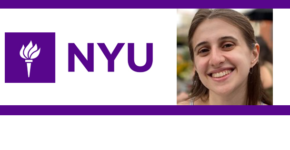 On New York University Week: Reducing bias in children is possible, if the causes are explained.
On New York University Week: Reducing bias in children is possible, if the causes are explained.
Rachel Leshin, Ph. D. candidate in the psychology department, describes how.
Rachel is a sixth-year PhD candidate at New York University in the psychology department. Her research falls at the intersection of three areas: social psychology, developmental psychology, and cognitive psychology. In her work, she examines how children form their concepts of the social world (including their beliefs about social categories, like gender, race, and social status) across development.
We Can Reduce Bias in Children – If It’s Causes are Explained
Children notice inequality from a young age and often end up reinforcing it,
revealing a bias that may carry into adulthood. For example, children often say that
group disparities are acceptable and prefer people from higher status groups. We
wondered whether teaching children about the structural causes of inequality—the
policies, laws, or norms that advantage one group over another—might lead to lower
levels of bias and greater efforts to address inequality.
We tested this with 200 children, ages 5-10. We first introduced them to two fictional
groups: one that had a lot of economic resources, and one that had a little. Then, we
gave children one of three explanations for the disparity. In one condition, children
learned that the inequality had resulted from structural “rules” created by the high-status
group; in another, they learned that it resulted from rules created by a neutral third-
party; and in the third – a control condition – we didn’t provide an explanation at all.
Compared to the other two conditions, children who learned that the high-status group
had made the structural rules showed lower levels of group bias, perceived the status
hierarchy as less fair, and gave more resources to the low-status group.
Our findings suggest that structural explanations can be effective in childhood, but only
if they specify the role of the high-status group in creating the inequality. We think this
might be because, without this information, children may assume that whatever rules or
policies exist are somehow right and not seek to challenge them. Only when children
learned that these rules had been enacted by the high-status group, for their benefit, did
they realize that the system was unfair.
Read More:
[TIME] – It Might Be Possible to Reduce Bias in Kids, New Research Suggests
